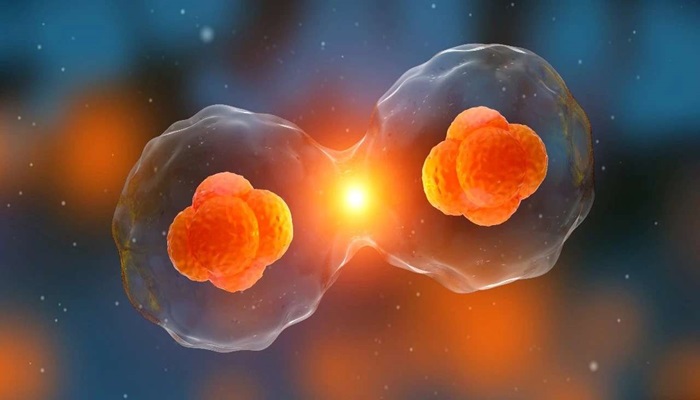Menstrual Cycle Regulation: Oestrogen is one of the key hormones involved in the menstrual cycle. It helps in the development of the endometrium, the lining of the uterus. At the beginning of the cycle, oestrogen levels rise, causing the endometrium to thicken in preparation for a possible pregnancy. This thickening provides a suitable environment for the implantation of a fertilized egg. If pregnancy does not occur, the drop in oestrogen and progesterone levels leads to menstruation.
Fertility and Ovulation: Oestrogen is also vital for fertility. It works in conjunction with other hormones such as follicle – stimulating hormone (FSH) and luteinizing hormone (LH). During the menstrual cycle, rising oestrogen levels stimulate the growth of ovarian follicles. A surge in LH, triggered in part by oestrogen, leads to ovulation. In addition, oestrogen helps to maintain the health of the fallopian tubes, facilitating the transport of the egg from the ovaries to the uterus.
Vaginal Health: Oestrogen is responsible for maintaining the health and function of the vagina. It keeps the vaginal tissues thick, moist, and elastic. Adequate oestrogen levels prevent vaginal dryness, itching, and discomfort. It also helps in maintaining the normal pH balance of the vagina, which is important for preventing infections. During menopause, when oestrogen levels decline, vaginal atrophy can occur, leading to these uncomfortable symptoms.
2.Skeletal System Support
Bone Density Maintenance: Oestrogen plays a significant role in bone health. It helps to regulate the activity of osteoblasts (cells that build bone) and osteoclasts (cells that break down bone). During a woman’s reproductive years, oestrogen promotes bone formation and inhibits excessive bone resorption. This helps to maintain bone density. When oestrogen levels drop, as in menopause, the balance shifts towards more bone resorption, increasing the risk of osteoporosis. Adequate oestrogen is, therefore, crucial for preventing fractures and maintaining strong bones throughout a woman’s life.
Joint Health: Oestrogen also has an impact on joint health. It helps to keep the cartilage in joints healthy and lubricated. Women with lower oestrogen levels may experience more joint pain and stiffness, and a higher risk of developing conditions such as osteoarthritis.
3.Cardiovascular System Benefits
Blood Vessel Health: Oestrogen has a beneficial effect on blood vessels. It helps to keep the walls of blood vessels smooth and flexible by promoting the production of nitric oxide, which causes blood vessels to dilate. This improves blood flow and helps to lower blood pressure. By maintaining healthy blood vessels, oestrogen reduces the risk of developing atherosclerosis, a condition where plaque builds up in the arteries.
Cholesterol Regulation: Oestrogen can also influence cholesterol levels. It tends to increase high – density lipoprotein (HDL) cholesterol, often referred to as “good” cholesterol, and decrease low – density lipoprotein (LDL) cholesterol, or “bad” cholesterol. This favorable lipid profile helps to protect against heart disease.
4.Skin and Hair Health
Skin Elasticity and Hydration: Oestrogen is involved in maintaining the health and appearance of the skin. It helps to keep the skin thick, elastic, and well – hydrated. It promotes the production of collagen, a protein that provides structure to the skin. As oestrogen levels decline with age, the skin may become thinner, drier, and more prone to wrinkles.
Hair Growth and Quality: Oestrogen also affects hair growth. It can influence the hair growth cycle, helping to keep hair in the growth phase for a longer period. In addition, it can improve the quality of the hair, making it shinier and less brittle. During hormonal imbalances, such as those that occur during menopause or certain medical conditions, changes in hair growth and quality may be observed.
5.Central Nervous System and Mood
Mood Regulation: Oestrogen has an impact on the brain and can affect mood. It is involved in the production and regulation of neurotransmitters such as serotonin, which is associated with feelings of well – being and happiness. Fluctuations in oestrogen levels, such as during the menstrual cycle, pregnancy, or menopause, can lead to mood swings, depression, or anxiety in some women.
Cognitive Function: There is also evidence to suggest that oestrogen may play a role in cognitive function. It may be involved in processes such as memory and learning. Some studies have shown that changes in oestrogen levels during menopause can be associated with changes in cognitive abilities, although the relationship is complex and not fully understood.
Conclusion
Oestrogen is a remarkable hormone with far – reaching effects on the body. From its crucial role in the reproductive system to its impact on bones, heart, skin, and mood, it is clear that maintaining a proper balance of oestrogen is essential for a woman’s overall health.
Understanding the functions of oestrogen helps in managing hormonal imbalances and related health issues, and highlights the importance of medical care during different life stages when oestrogen levels may change.
Related topics:
- Green and Natural: Phytoestrogen Supplements
- What Essential Oil Helps With Hot Flashes?
- How To Help Hot Flashes Without Hormones?


